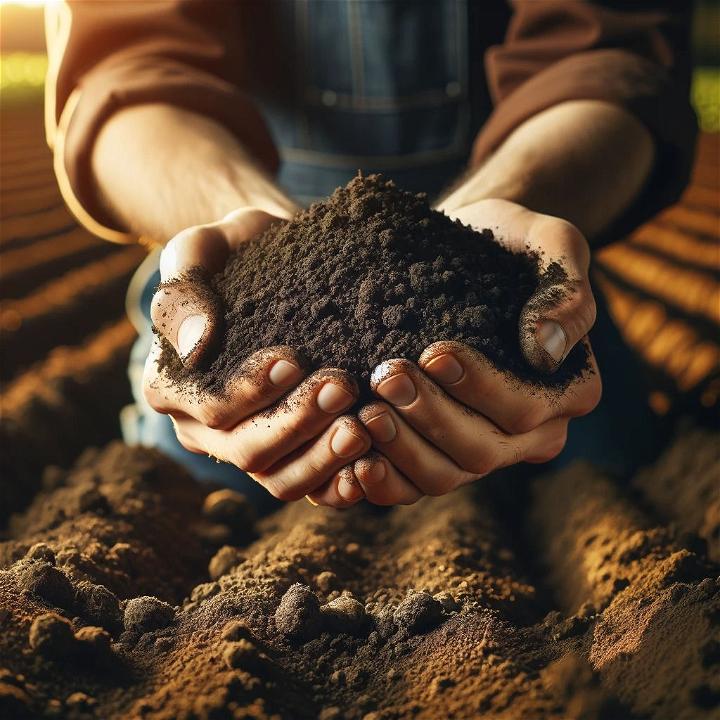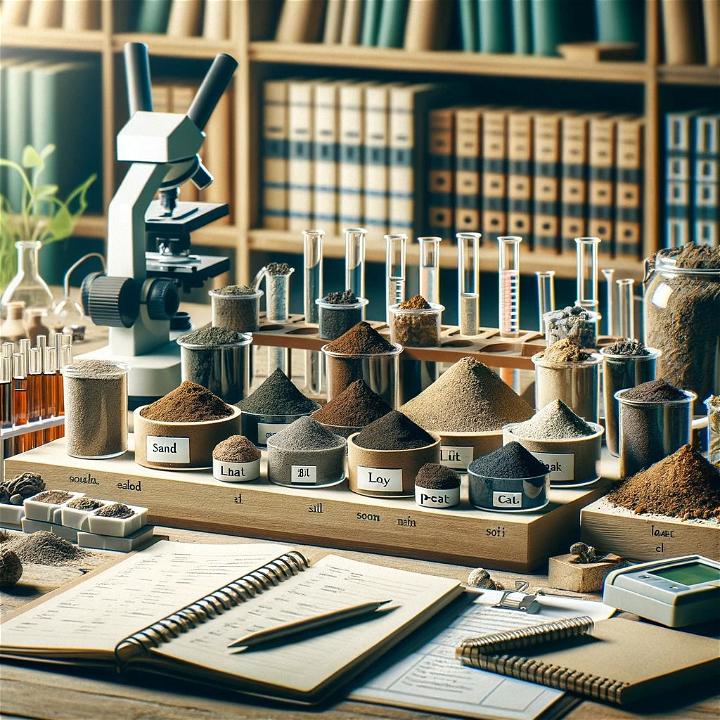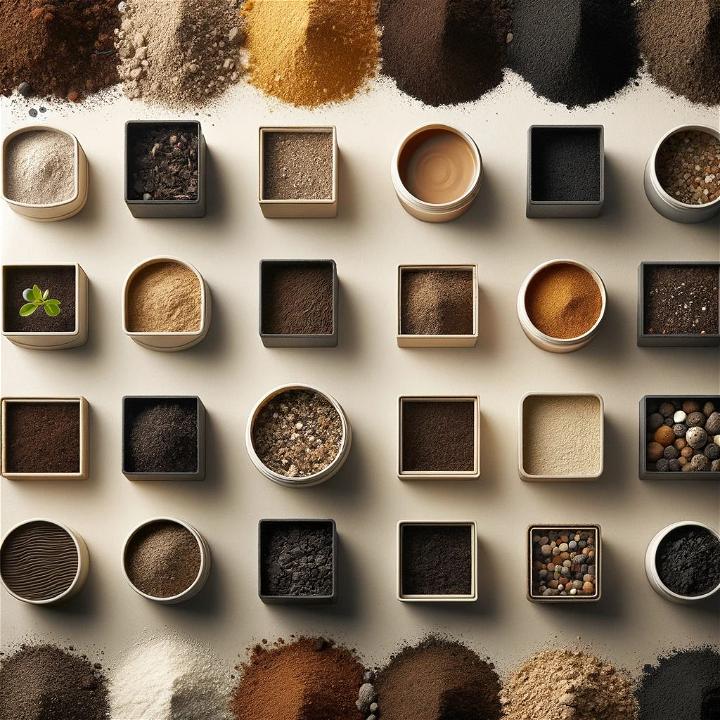When it comes to gardening and landscaping, understanding the different types of soil is crucial for the health and success of your plants. Soil can be categorized into several primary types, including sandy soil, clay soil, silt soil, and loamy soil. Each type of soil has distinct characteristics that impact drainage, nutrient retention, and plant growth.
Sandy soil is known for its larger particles, which allow for excellent drainage but can struggle to retain nutrients. On the other hand, clay soil, with its fine particles, retains moisture well but can become compacted, affecting root development. Silt soil falls in between sandy and clay soil in terms of particle size, offering moderate drainage and nutrient retention.

Moreover, loamy soil, considered the optimal type for gardening, is a blend of sand, silt, and clay, providing good drainage, moisture retention, and nutrient availability. Understanding the composition of your soil can help you tailor your planting strategies and soil amendments to ensure thriving plants in your garden or landscape.
By delving into the characteristics of each soil type and how they impact plant growth, you can make informed decisions to enhance the health and vitality of your green spaces. Whether you’re a seasoned gardener or just starting on your gardening journey, knowing the types of soil can be a game-changer in achieving a lush and vibrant garden.
Understanding Soil Composition
Soil composition plays a crucial role in determining the fertility and health of the soil that supports plant growth. Let’s delve into the composition and characteristics of various types of soil:
Mineral Soil
Mineral soil is primarily composed of mineral particles like sand, silt, and clay. Sand particles are the largest, providing good aeration and drainage but have lower water retention. Silt particles are smaller and smoother, offering moderate drainage and fertility. Clay particles are the finest and provide excellent water retention but can be prone to compaction.
Mineral soil’s composition influences its characteristics, with sandy soil being well-draining but less fertile, silty soil having good fertility, and clay soil retaining water effectively but potentially becoming compacted. A balance of these particles results in loamy soil, which combines the best of all three for optimal plant growth.
Organic Soil
Organic soil, also known as histosol, is rich in organic matter derived from decomposed plant material. These soils are characterized by a high organic content, providing nutrients essential for plant growth. Organic soil formation occurs over time as organic matter accumulates and decomposes, creating a fertile environment for plants.
The high organic matter content in organic soil enhances soil structure, water retention, and microbial activity. These soils are commonly found in marshy areas or locations with abundant plant growth, contributing to healthy ecosystems and supporting diverse flora and fauna.
Loamy Soil
Loamy soil is a balanced combination of sand, silt, and clay, providing optimal conditions for plant growth. This soil type offers good drainage, adequate water retention, and high fertility levels. Gardeners often favor loamy soil for its versatility and ability to support a wide range of plants effectively.
The balanced texture of loamy soil allows for proper root development, nutrient uptake, and water infiltration. Its fertility and structure make it ideal for agriculture and gardening, promoting healthy plant growth and robust yields.
Understanding the composition and characteristics of mineral, organic, and loamy soil types is essential for cultivating healthy plants and maintaining productive ecosystems. Each soil type offers unique benefits and challenges, shaping the way plants interact with their environment and thrive in various conditions.
Classification of Soil
Soil can be classified into different categories based on various factors. Two common methods of classifying soil are based on particle size and composition.

Based on Particle Size
Soils are classified into three main types based on particle size: sand, silt, and clay. Sand particles are the largest, followed by silt particles, and clay particles are the smallest. The classification is determined by the proportions of these particle sizes present in the soil. Sand is gritty, silt feels like flour, and clay is smooth and sticky. Each type has its own characteristics that affect properties like drainage, moisture retention, and fertility. Learn more about soil texture here.
Based on Composition
Another way to classify soil is based on its composition. Soils can be categorized into mineral, organic, and loamy types. Mineral soils are predominantly made up of inorganic materials like sand, silt, and clay. Organic soils contain a high percentage of organic matter derived from plant and animal residues. Loamy soils are a mix of sand, silt, and clay, offering a balanced combination of drainage, moisture retention, and fertility. Understanding the composition of soil can help determine its suitability for various plants and crops.
By classifying soil based on particle size and composition, we can better understand its characteristics and choose the right treatments and plants for optimal growth.
Different Types of Soil
Soil is not just dirt; it comes in various types, each with its own unique properties that influence plant growth. Understanding the different types of soil can help you tailor your gardening or farming practices for optimal results.

Alkaline Soil
Alkaline soil, also known as sweet soil, has a pH level above 7. It tends to be chalky and often contains high levels of calcium and magnesium. Plants that thrive in alkaline soil include lilacs, clematis, and asparagus. These plants have adapted to the higher pH levels and can flourish in this type of soil. Alkaline soil is also great for growing vegetables like cabbage and broccoli.
Acidic Soil
Acidic soil, with a pH below 7, is known for its sour characteristics. This type of soil is rich in aluminum and iron but lacks essential nutrients like calcium and magnesium. Plants that prefer acidic soil include azaleas, blueberries, and rhododendrons. pH levels are crucial for plant growth in acidic soil, as they can impact nutrient availability. Adjusting the pH levels through amendments is vital for maintaining a healthy garden in acidic soil.
Peat Soil
Peat soil is unique due to its high organic matter content, making it an excellent moisture retainer. This type of soil forms slowly over time from decomposed plant material in waterlogged conditions. Peat soil is highly acidic and nutrient-poor but is valued for its ability to retain moisture, making it ideal for plants like cranberries, certain grasses, and some carnivorous plants. However, it requires special care and management to prevent degradation and ensure sustainability.
Understanding the characteristics of alkaline, acidic, and peat soils is essential for successful gardening and agriculture. By recognizing the distinctive features of each soil type and the plants that thrive in them, you can cultivate a flourishing garden or farm tailored to the specific needs of your crops.
FAQs
Have questions about different types of soil? Here are some frequently asked questions answered:
What are the primary types of soil based on texture?
Soil can be classified into three main types based on texture: sand, silt, and clay. Each type has unique characteristics that affect plant growth and water retention.
How does soil composition impact plant growth?
The composition of soil plays a crucial role in determining which plants thrive in specific environments. Sandy soil drains quickly but may require more frequent watering, while clay soil retains moisture but can be compacted.
Why is soil pH important?
Soil pH levels influence the availability of essential nutrients to plants. Understanding the pH of your soil helps you choose the right plants or adjust the soil pH for optimal growth.
How can I improve the quality of my soil?
Improving soil quality can be achieved through various methods such as adding organic matter like compost, using cover crops to prevent erosion, and rotating crops to maintain soil fertility.
Do different types of soil require specific watering techniques?
Yes, the type of soil in your garden affects watering needs. Sandy soil requires more frequent watering due to its fast drainage, while clay soil benefits from slow, deep watering to prevent water runoff.
Remember, understanding the soil beneath your feet is the first step to creating a thriving garden or landscape.
Conclusion
In this comprehensive exploration of various types of soil, we have delved into the classification and characteristics of different soil types. From sandy soil to clay soil, each type brings unique properties that play a pivotal role in determining the suitability for various purposes. Understanding the nuances of soil composition is crucial for farmers, gardeners, and environmental scientists alike.
By grasping the distinctions between sand, silt, clay, peat, chalk, and loam soils, we embark on a quest to optimize agricultural practices, landscaping endeavors, and ecological restoration projects. The diverse array of soils acts as a game-changer in fostering thriving plant growth, sustaining ecosystems, and mitigating environmental challenges.
So, whether you are a novice gardener looking to enhance your soil fertility or a seasoned farmer aiming to boost crop yield, the knowledge of soil types serves as a cutting-edge tool in your horticultural arsenal. Embrace the richness of sandy, loamy, or clay soils and leverage their unique characteristics to cultivate a verdant landscape filled with vibrant flora.
In the vast world of soil science, each soil type holds a story waiting to be unraveled. As we continue to explore the depths of soil diversity, let us remain steadfast in our commitment to nurturing the land we tread upon. Soil, in its myriad forms, embodies the resilience of nature and beckons us to tread lightly yet boldly on this seamless terrestrial canvas.
Explore More About Soil: Relevant Articles and Resources
Discover useful articles and resources about soil to expand your knowledge and understanding. Explore More About Soil today!
- Adding Phosphorus to Soil: Boost your garden’s growth with easy methods to add phosphorus to soil. Enhance plant health and yield.
- Buying Loam Soil Guide: Discover the best places to buy loam soil with our detailed guide, perfect for gardening beginners.
- Understanding Topsoil: Uncover the uses and benefits of topsoil for your garden to thrive. Essential insights for every gardener.
- Avoiding Top Soil Mistakes: Learn crucial tips to avoid common soil mistakes for a lush, healthier garden.
- Soil Amendments Guide: Natural ways to enrich your garden using soil amendments. Grow your garden organically and effectively.
- Raising Soil pH: Simple, effective techniques to raise soil pH for healthier, more vibrant plants.
- Lowering Soil pH Guide: Easy steps to lower soil pH for optimal plant growth. Achieve garden success.
- Home Soil pH Testing: An easy guide to test soil pH at home, ensuring the perfect environment for your plants.
- Loam Soil Ultimate Guide: Explore what loam soil is, the ultimate gardening medium for plant health and growth.
- Importance of Soil: Discover why soil is crucial to our ecosystem and the sustainability of our planet.
- What Is Soil: Delve into the composition, types, and functions of soil, the foundation of all gardening success.
